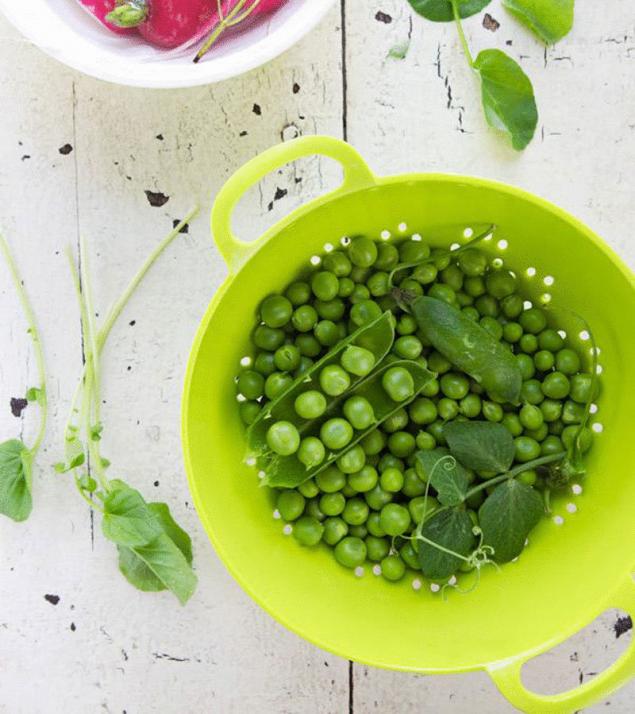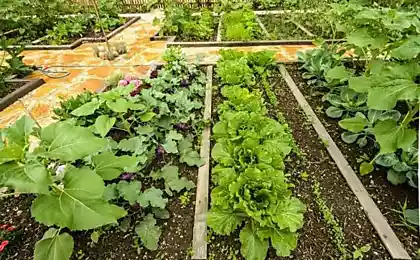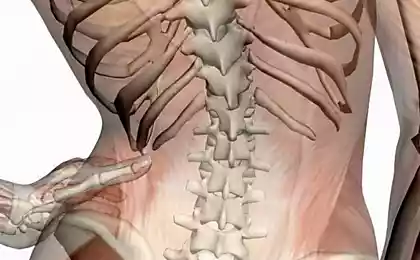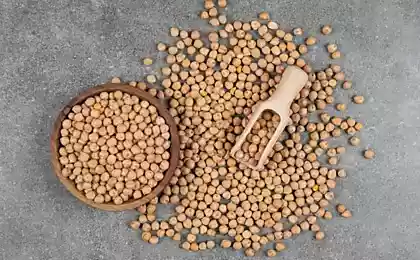438
Peas strengthens bones

Sweet, delicious green peas are popular garden plants. It is one of the oldest cultivated by mankind vegetables. It is grown to eat his seed. Most likely, green peas spread around the world from the Himalayan foothills. Now he is one of the most popular representatives of legumes and is grown in the temperate and sub-tropical climate. Unlike beans in the Middle ages, peas were the food of all sectors of society and were considered easily digestible product.
The plant is a climbing vine. Botanists refer it to the family Fabaceae and the genus Pisum. Its scientific name is Pisum sativum. It is called differently, such as English peas, sweet peas, garden peas, and just peas. Resource Nutrition And You told a lot about the beneficial properties and characteristics of this wonderful product.
The pea is an annual plant. For growth it requires backup. It grows in dry, sandy soil with adequate moisture and cool weather. Pea a pod of about 5-7,5 cm in length. It can be a little "bloated" or rather, "compressed", straight or slightly curved. Each pod contains from 2 to 10 edible pale green seed.
When the pods ripen, the seeds become green, soft and sweet — there comes a time to harvest peas. If the peas are overripe, it becomes less sweet and even bitter. Light green color is replaced by yellow.
"Antennae" peas are edible too. In the food consumed "antennae" of young plants. Their taste similar to the taste of pea seeds. They are popular in East and South-East Asia.
Use peas for healthof Green peas is among the most nutritious legumes. It is rich in healthy phytonutrients, minerals, vitamins and antioxidants.
Fresh peas are relatively low calorie (when compared with beans and cow peas). Energy value of 100 grams of peas has 81 calories. The cholesterol in peas is not contained. Peas — good source of protein, vitamins and digestible and indigestible dietary fiber.
Fresh snow peas are a great source of folic acid. In 100 grams contains 16 micrograms of this component, or 16% of the recommended daily allowance. Folic acid — one of B-complex vitamins required for DNA synthesis in cells. Studies indicate that is moderately rich in folic acid foods for pregnancy helps to prevent neural tube defects of the fetus. But in all cases should be consulted with a doctor, considering information from the Internet only as an auxiliary.
Fresh green peas are a good source of ascorbic acid (vitamin C). In 100 grams of peas contains 40 milligrams (67% of the recommended daily value of consumption) of vitamin C. Vitamin C is a powerful natural water-soluble antioxidant. Rich in vitamin C in vegetables helps the human body develop resistance to infectious agents and to eliminate the body of harmful, promotes pathogens radicals.
Peas contain phytosterols especially it is rich in ß-sitosterol. Research shows that some vegetables (e.g., legumes), fruits and cereals rich in plant sterols that help reduce cholesterol levels in the human body.
Garden peas also acts as a good source of vitamin K. 100 g of fresh pea seeds contains of 24.8 micrograms (21% of the recommended daily value of consumption) vitamin K-1 (phylloquinone). Supposedly vitamin K plays a role in bone formation (mineralization), promoting osteotropic activity in the bone cells. As installed, it also plays a role in slowing the course of Alzheimer's disease, reducing damage to neurons in the brain damage.
Fresh green peas in sufficient quantities contains flavonoid antioxidant such as carotenes, lutein and zeaxanthin as well as vitamin A (765 international units per 100 grams, that is 25.5% of the recommended daily value of consumption). Vitamin a is required for maintaining healthy membranes, skin and vision. In addition, eating vegetables rich in flavonoids, helps to prevent lung cancer and oral cavity.
In addition to folic acid, peas contain adequate amounts of other B-complex vitamins, including Pantothenic and nicotinic acid, thiamin and pyridoxine. It is also rich in minerals — calcium, iron, copper, zinc and manganese.
Selecting and storing green peasavoid rumpled and wrinkled, yellowed and over-ripe pods. Frozen peas can be stored for several months, while in the container in the refrigerator for only two or three days.
Nutritional value of green peas
In parentheses are the percentage of the daily allowance. The nutritional value is given per 100 g of fresh raw peas, according to information from the Ministry of agriculture of the USA, shown in the resource Nutrition And You.
General information:
the energy value of 81 kcal (4%);
carbohydrates and 14.45 grams (11%);
protein — 5.42 grams (10%);
fats — 0.40 grams (2%);
cholesterol — 0 milligrams (0%);
fiber, part of the food is 5.1 grams (13%).
Vitamins:
folic acid (vitamin B9) — 65 micrograms (16%);
nicotinic acid (vitamin B3) — 2,090 milligrams (13%);
Pantothenic acid 0.104 milligram (2%);
pyridoxine (vitamin B6) — 0,169 milligrams (13%);
Riboflavin (vitamin B2) — 0,132 mg (10%);
thiamine (vitamin B1) 0,266 milligram (22%);
vitamin A — 765 international units (IU, IU) is 25.5%;
vitamin C 40 mg (67%);
vitamin E — 0.13 mg (1%);
vitamin K with 24.8 micrograms (21%).
Electrolytes:
sodium — 5 mg (<1%);
potassium — 244 mg (5%).
Minerals:
calcium — 25 mg (2,5%);
copper — 0,176 mg (20%);
iron — 1.47 milligrams (18%);
magnesium — 33 mg (8%);
manganese — 0,410 milligrams (18%);
selenium is 1.8 micrograms (3%);
zinc — 1.24 milligrams (11%).
Phytonutrients:
beta-carotene (ß-carotene), which is rich in carrots — 449 micrograms;
beta-cryptoxanthin (ß-cryptoxanthin) — 0 micrograms;
lutein-zeaxanthin — 2477 micrograms.published
Source: hi-news.ru/science/biologiya-gorox-ukreplyaet-kosti.html























